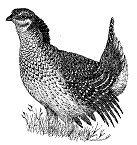Papers in the Biological Sciences

Papers in Ornithology
Document Type
Article
Date of this Version
2011
Citation
Animal Behaviour 81 (2011), pp. 447–453; doi:10.1016/j.anbehav.2010.11.016
Abstract
Status signals are thought to reduce the potential costs of social conflict over resources by advertising social status to other group members and reducing unnecessary contests between individuals of differing abilities. Nearly all studies of status signals to date have focused on single signaling traits, and most studies that have investigated multiple traits did not examine whether different traits are used in different contexts, as is required for them to function as multiple signals. We examined the role of gold and black crown patches of wintering golden-crowned sparrows, Zonotrichia atricapilla, in determining social dominance during experimentally staged encounters between unfamiliar individuals. Specifically, we determined whether variation in weakly correlated or uncorrelated traits (crown patch size and color, body size) differentially affected the outcome of interactions involving avoidance versus aggression. Overall, crown patch size and color were better predictors of dominance than were body size or sex. Several traits, including both crown features and morphological traits, predicted which individual avoided the other in dyadic interactions that did not escalate beyond avoidance. However, when dyads had similar gold crown patch sizes, the interaction was more likely to escalate, leading to aggression. In contrast to avoidance interactions, the outcomes of aggressive contests were largely predicted by variation in the color of black crown patches. Taken together, our results show that gold and black crown features operate as multiple status signals that accommodate an escalated gradient of interactions and suggest that social status involves more complexity than can be accommodated by a single signal.


Comments
Copyright © 2010 The Association for the Study of Animal Behaviour. Published by Elsevier Ltd. Used by permission.